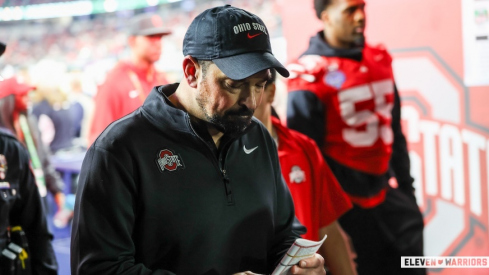
Conference realignment has been a source of frustration for fans since the first momentous shift in the summer of 2010. Nebraska abandoned its home of more than 100 years to join the Big Ten, while Colorado left behind more than a half century of traditions and memories for the Pac-12.
The Cornhuskers were charter members of the Missouri Valley Intercollegiate Athletic Association when it was founded in 1907. Save for two years – 1919 and 1920 – Nebraska enjoyed a 101-year relationship with what would eventually be known as the Big 12 Conference. But in the senseless era of conference expansion, it all came to an end.
Now athletic directors, who have been supportive of realignment largely because it fattens their wallets, will live the hindrance firsthand. It was reported last week that the Big Ten will move to a nine-game conference schedule, similar to what the Big 12 and Pac-12 have already instituted.
This scheduling philosophy will always have kinks because it requires a handful of teams to play more road conference games than home games. But it makes sense why a 10-team league like the Big 12 would be in favor, because it allows a round-robin format where every team plays one another.
For the Big Ten and other leagues with more than 10 members, the addition of one game to the conference schedule makes less sense when you consider the 14 teams will not match up together. What it would do is add even more value to one of college sports’ most valuable brands.
The change reportedly will be implemented for the 2016 season, the final year of the Big Ten’s current $100 million TV contract with ABC/ESPN. The conference says the change is based on strengthening the teams’ schedules. A playoff is coming in 2014 and it’s clear that strength of schedule will be part of the selection process.
This isn’t the first time the Big Ten has toyed with the idea of a nine-game schedule. From 1971-72 and again from 1977-80, two of the 10 teams played nine-game schedules. From 1983-84, eight of the 10 Big Ten schools played a nine-game conference slate.
That inexplicable decision possibly cost Ohio State a shot at the 1983 Rose Bowl, when Michigan finished 8-1 in the conference and the Buckeyes were a half-game back at 7-1, even though they beat the Wolverines.
“It’s disappointing, I guess, not going to the Rose Bowl,” said then-head coach Earle Bruce in the Cleveland Plain Dealer. “I don’t feel bad for myself. I feel bad for our football players. But there’s nothing we can do about that. We came up percentage points short. I wish they could have counted the Baylor game as a league game.”
A more sensible and fair plan is in place now.
The thinking goes that Ohio State will continue playing one marquee non-conference game every season – they have them scheduled out to 2023 – and go away from playing FCS teams. Ohio State athletic director Gene Smith said in October that he wants to schedule games against only BCS conference opponents by 2018.
The expanded schedule should give fans more must-see games. Michigan athletic director Dave Brandon told Eleven Warriors in February that the league wants to increase the number of games between member schools.
“Fifty years ago, we had 10 teams in the Big Ten,” he said. “Now we have 14. If you’re a kid coming in as a freshman and you’re going to be part of the Big Ten Conference with 14 teams, if you only play eight conference games a season, you’re going to go through a whole four-year career and not play some of the other teams. That doesn’t feel particularly right.
“You’re trying to build conference continuity and cohesion. We want to travel to their campuses, they want to travel to our campuses, and you’re going to put yourself in position where you aren’t going to be able to do that. That would be why a lot of the conferences have moved to nine.”
It’s a legitimate concern and is something that’s already taking place. Northwestern and Ohio State just went through a four-year schedule break, and the Buckeyes will do the same with Nebraska from 2013-16, though that is subject to change with a new 14-team league.
Ohio State and the Wildcats first met on the gridiron in 1913 and have played a total of 74 games. Northwestern also is a popular landing spot for Central Ohio high school players, meaning that last year’s seniors not only didn’t get to step foot in Ohio Stadium, but they didn’t play against the Buckeyes, period.
Economic concerns highlight the cons list. Football programs fund athletic departments, and the possibility of a lost home game raises serious concerns. Ohio State makes in the neighborhood of $6 million per home game. Take that away and it has to be made somehow.
Another rise in ticket prices, more expensive concessions, steeper parking prices, etc. could be the end result. You, the fan and the consumer, would be the one losing out.
“Specifically to Michigan and, certainly, Ohio State, because Gene (Smith) and I have talked about this, it is exceedingly important that we play a minimum of seven home games,” Brandon said. “Both of our business models are driven by that. If we were to get into a circumstance where we were playing six home games that would be very problematic.
“The consequences are that in a world where we go from eight to nine conference games, we would still have the ability to schedule three non-conference games. You could schedule two at home and schedule a home-and-home and make that work.”
According to the Toledo Blade, Michigan recently counted more than $45 million in revenue from ticket sales after eight home games in 2011. Ohio State collected $37 million for seven home games during the same season. Gameday revenues also include TV contracts (nearly $13 million), more than $9 million for sales of club seats and luxury suites and $3.5 million from ticket surcharges.
A solution to the imbalance would be playing 10 conference games, a scenario that was proposed. It would give each team an even five home and five road conference games. But the roadblock would still be having seven total home games. With a 12-game schedule, that would mean the termination of intersectional non-conference games, unless teams were willing to only have six home games in some seasons.
Marquee games have been in vogue for the better part of a decade, and Ohio State has carried the torch. Texas, USC, Miami, Oregon, Oklahoma, TCU, Virginia Tech, North Carolina and Boston College are all past or future opponents for the Buckeyes.
The change in scheduling philosophy has thrilled fans from Columbus to Blacksburg to Boise. Aggressive ADs who schedule with assertiveness are one of the best movements in college football since the playoff push was in its heyday.
Money is another player in this matter. Weaker opponents demand a higher price tag, often surpassing a million dollars. It seems silly to pay that much and diminish the bottom line on gameday returns. Less money is doled out to big-name opponents while TV contracts are larger.
Another popular trend is the increase in neutral site games, which also bring along attractive TV deals. How games such as Alabama and Michigan’s first-weekend matchup in Dallas last year would fit into a nine-game conference schedule remains to be seen.
“We would not do that on any kind of regular basis and we wouldn’t do it if it were at the expense of home games, because our fans deserve and want to see games on campus,” Brandon said. “That’s where our priorities are going to be. However, in some cases, if we can go on the road and play at a neutral site, we can play in a bigger venue and the economics are going to be far more attractive. You don’t have to do a home-and-home. It’s only a one-game deal, and the networks want those matchups to the point where they’ll pay up to get them.
“It won’t completely offset the loss of a home game-type revenue, but it’s much better than you’d get if you went on the road and played somebody. So financially it’s a good deal and, as an occasional departure from the norm, I thought it was a great experience for us. But that would be as a plus to seven home games, not at the expense of a home game.”
As is, the nine-game schedule will feature an inequity that could alter the Big Ten divisional races and, in turn, who wins the championship.
“I know a lot of ADs and coaches are concerned about a season where Ohio State plays four conference home games and Michigan plays five, and we’re competing for a Big Ten championship,” Brandon said. “There are some that would argue that that isn’t a level playing field, and I understand that.
“There are tradeoffs in whatever direction this goes.”
Just so long as the balance sheet shows a surplus.

